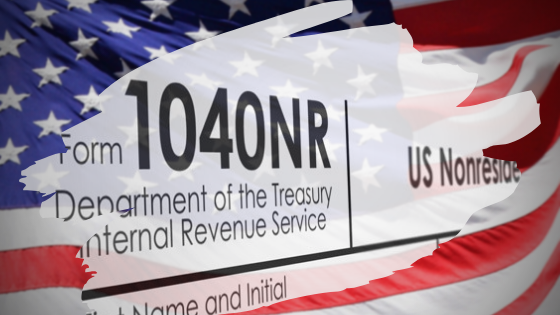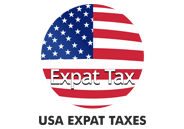
Non-resident is a person who isn’t a US resident or US Green Card holder or a US national but has a US source income. Here, you know everything related to US tax returns for non-resident:
A. Who Must File
If you relate to any of the following, you are required to file US return:
- A non-resident individual connected with or viewed as occupied with an exchange or business in the United States during the year e.g. rental property, partnerships in US and receiving K-1.
- A non-resident person who isn’t occupied with an exchange or business in the United States and has U.S. pay on which the tax risk was not fulfilled by the retention of tax at the source. Dividends, restricted stock options etc.
- A delegate or specialist answerable for documenting the arrival of an individual depicted in (1) or (2),
- A guardian for a non-resident home or trust, or
- A resident or residential guardian, or other individuals, accused of the consideration of the individual or property of a non-resident might be required to record an annual tax return for that individual and make good on the regulatory obligation.
NOTE: If you were a non-resident student, educator, or student who was incidentally present in the United States on an “F,” J,” M,” or “Q” visa, you are seen as occupied with an exchange or business in the United States. You must have Form 1040NR, US Tax Returns for Non-Resident (or Form 1040NR-EZ, U.S. Annual Tax Return for Certain Non-resident with No Dependents) just if you have pay that is liable to tax, for example, compensation, tips, loan and association awards, profits, and so on. Allude to Foreign Students and Scholars for more information.
Asserting a Refund or Benefit
- You must likewise document an annual tax return if you need to:
- Claim a discount of over withheld or overpaid tax, or depending on the tax treaty
- Claim the advantage of any conclusions or credits. For instance, if you have no U.S. business activities but have pay from genuine property that you treat as viably associated salary, you must available document a real and exact come back to take any passable reasoning against that pay.
B. Which Income to Report
A non-resident outsider’s salary that is liable to U.S. annual tax must, for the most part, be isolated into two classifications:
- Income that is Effectively Connected with an exchange or business in the United States
- S. source pay that is Fixed, Determinable, Annual, or Periodical (FDAP)
Viably Connected Income, after passable reasoning, is taxed at graduated rates. These are similar rates that apply to U.S. residents and residents. Successfully Connected Income should be accounted for on page one of Form 1040NR, U.S. Non-resident Income Tax Return. FDAP pay is taxed at a level 30 per cent (or lower arrangement rate, if qualify), and no reasoning are permitted against such payment. FDAP salary should be accounted for on page four of Form 1040NR.
C. Which Form to File
Non-resident outsiders who are required to document a personal tax return must use:
- Form 1040NR, U.S. Non-resident Income Tax Return or,
- Form 1040NR-EZ, U.S. Annual Tax Return for Certain Non-resident outsiders with No Dependents, if qualified. Allude to the Instructions for Form 1040NR-EZ to decide whether you are eligible.
When and Where to File?
If you are a worker and you get wages subject to U.S. annual tax retaining, or you have an office or spot of business in the United States, you must, for the most part, record by the fifteenth day of the fourth month after your tax year closes. For an individual recording using a schedule year, this is, for the most part, April 15.
If you are not a representative or independently employed individual who gets compensation or non-worker remuneration subject to U.S. annual tax retaining, or if you don’t have an office or spot of business in the United States, you must record by the fifteenth day of the sixth month after your tax year closes. For an individual documenting using a schedule year, this is, for the most part, June 15.
Record Form 1040NR-EZ and Form 1040NR at the location appeared in the directions for Form 1040NR-EZ and 1040NR.
Augmentation of Time to Document
If you can’t record your arrival by the due date, you should document Form 4868 to demand a programmed expansion of time to document. You must document Form 4868 by the customary due date of the arrival.
You Could Lose Your Deductions and Credits
To get the advantage of any passable findings or credits, you must timely record a definite and precise personal tax return. For this reason, an arrival is timely if it is documented inside 16 months of the due date just discussed. The Internal Revenue Service has the option to deny conclusions and credits on tax returns recorded over 16 months after the expected years of the returns.
Withdrawing Non-Resident
Before leaving the United States, all outsiders (with specific exemptions) must get a certificate of consistency. This record, additionally famously known as the cruising license or take-off grant, must be verified from the IRS before leaving the U.S. You will get a cruising or take-off license in the wake of recording a Form 1040-C, U.S. Withdrawing Income Tax Return, or Form 2063, U.S. Withdrawing Income Tax Statement.
Regardless of whether you have left the United States and recorded a Form 1040-C on take-off, despite everything, you must document a yearly U.S. annual tax return. If you are married, and both you and your spouse are required to document, you must each record a different return, except if one of the spouses is a U.S. resident or a resident outsider, in which case the withdrawing could record a joint come back with their spouse (Refer to Non-resident Spouse Treated as a Resident).
